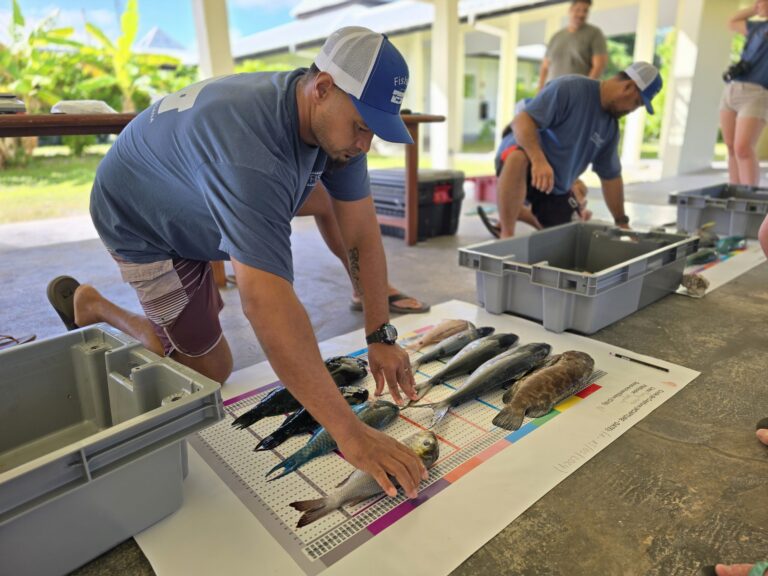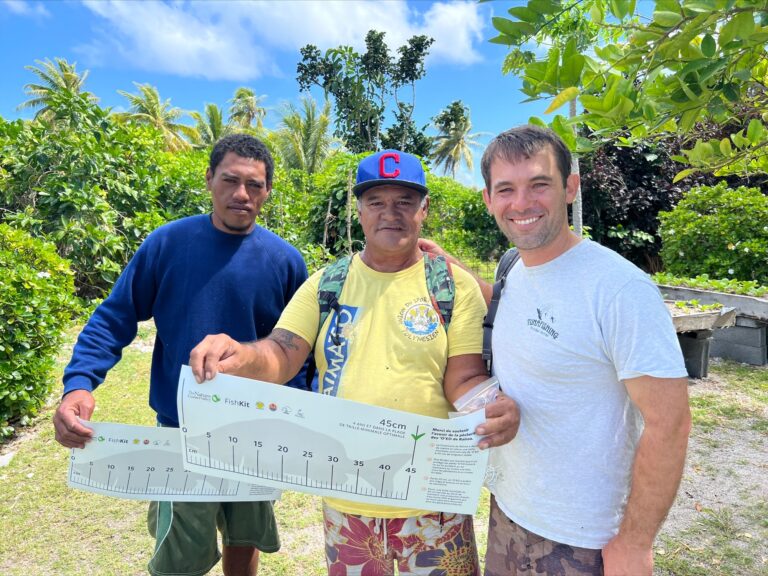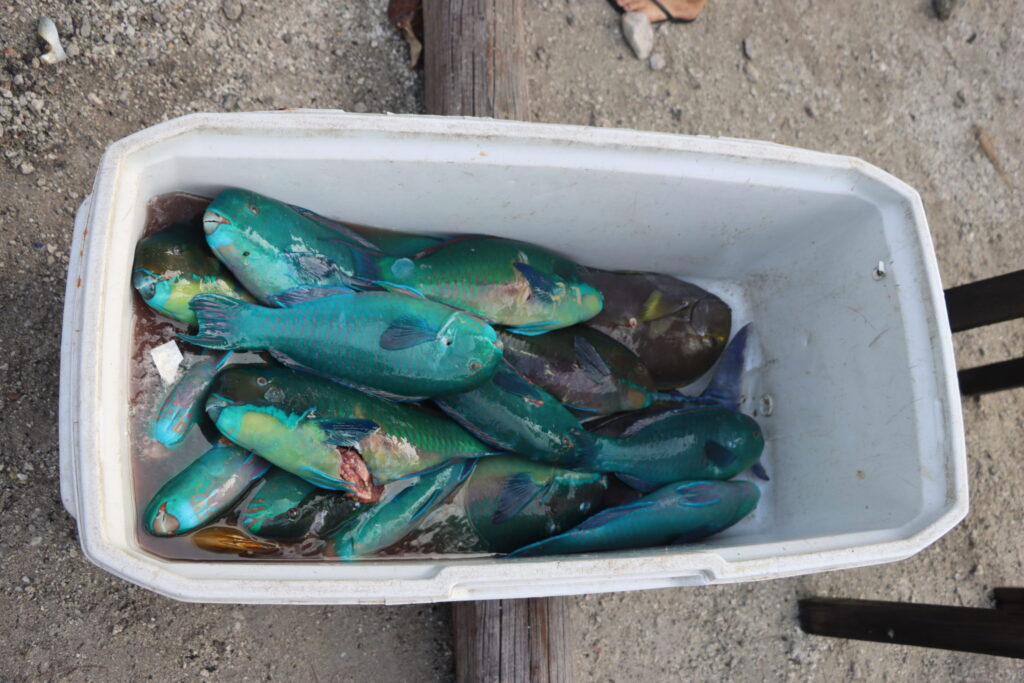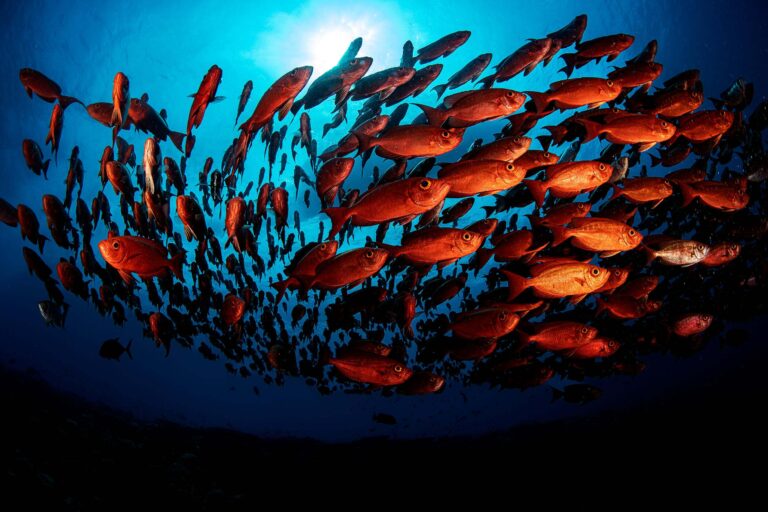What is FishKit?
We developed FishKit, a set of software tools, to tackle the dual challenges limiting sustainability in small-scale fisheries: data gaps and limited know-how among local leaders to use data to design and implement management plans. FishKit makes it easier, faster, and more intuitive for coastal communities to collect and analyze data and transform it into specific management interventions that are proven to work for the majority of small-scale fisheries. Applying FishKit can improve fisheries management in small-scale fisheries, protecting ocean ecosystems while providing food and livelihoods to coastal communities.
Check out this video to discover how local community members are using FishKit to manage their fisheries and ensure healthy oceans. This video journeys from sunlit fish ponds in Hawai’i to the turquoise waters of French Polynesia where our digital tool is helping people closest to the water collect and analyze the data they need to conserve their resources.












